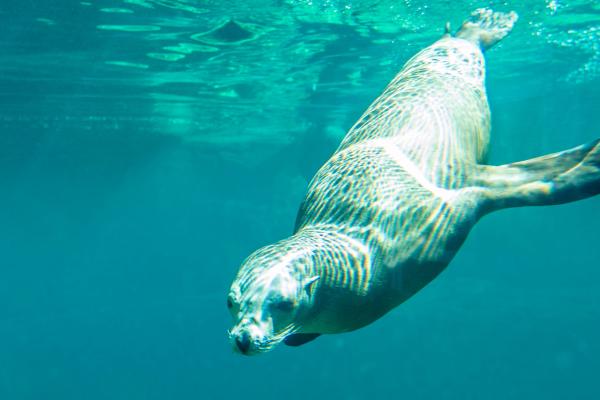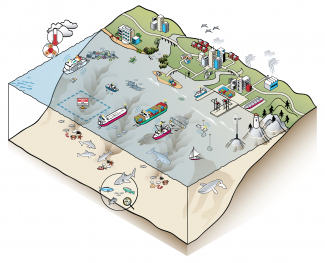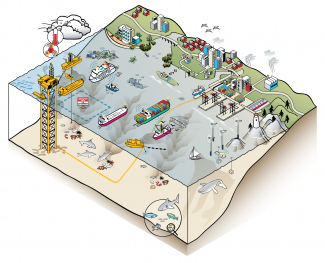
BOEM scientists use the best available science to identify and analyze the potential impacts from the activities BOEM permits (or authorizes) such as conventional and renewable energy development and sand and gravel extraction.
Both resources (such as fisheries), and other anthropogenic stressors (such as commercial fishing) contribute to the current state of the environment that is described by BOEM scientists. Other examples of resources that BOEM scientists analyze in environmental assessments include water quality, benthic ecosystems, fish, birds, marine mammals, commercial and recreational fisheries, employment, culture and vulnerable coastal communities. Anthropogenic stressors include climate change, existing oil and gas, vessel traffic, fishing, tourism, pollution and other federal activities contribute to the baseline and are analyzed to contextualize the cumulative effects of a proposed BOEM permitted action. A BOEM permitted action is often comprised of many activities that may affect the environment in different ways; BOEM scientists call these activities “Impact-Producing Factors.” The total list of resources, stressors and Impact-Producing Factors considered by BOEM scientists during environmental assessments can be found here (link to pdf of icons).
Step 1: Assess the Affected Environment
BOEM analyzes the marine, coastal, and human environments that may be impacted by permitted actions on the Outer Continental Shelf (OCS). This information enables scientists to understand the current baseline of these environments in order to better assess the changes impacts may cause to resources or ecosystems located within these environments.



